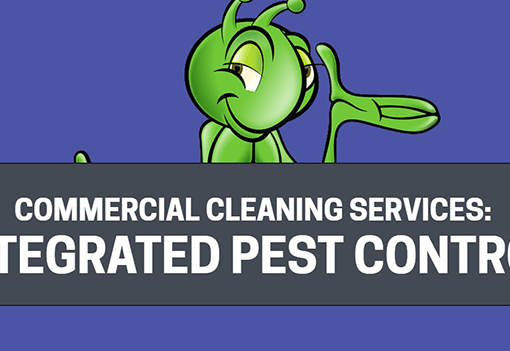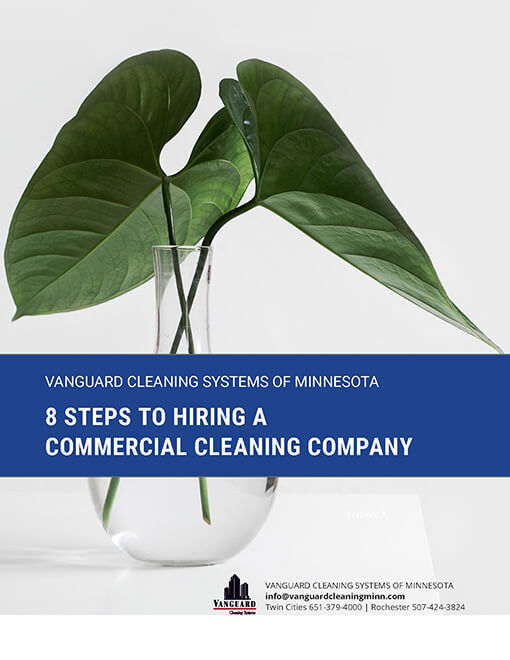Vanguard Cleaning Systems

Commercial Cleaning and Pest Control
Commercial cleaning services vendors can play an important role in your Green School Initiative’s Integrated Pest Management (IPM) program.
The aim of Green School IPM is to safely control the population of common pests, such as roaches, fleas, lice, bedbugs, and rodents, that can disrupt a student’s ability to learn, as well as carry disease, or illicit minor to dangerous allergic reactions.
The purpose of IPM is to implement non-toxic reduction and control methods that discourage pest infestation and to keep said pest’s away from student and faculty areas.
Where the use of control methods or non-toxic pesticides are not possible or practical, a progressively more aggressive plan is implemented that, while not devoid of toxic chemical use, adhere’s to an incremental plan that gradually increases in toxicity, as necessary, but emphasizes open and transparent communication with occupants, teachers, students, and parents.
According to CleanLink;
The biggest benefit of an effective IPM plan is that it can cut back on pesticide use significantly, often by more than 90 percent. This is possible because IPM does not just focus on getting rid of the current pest population. Instead, it involves examining and eliminating the environmental factors that are allowing the pests to reproduce and thrive.
Facility Audit
The first step towards successful IPM implementation is to inspect the school grounds and occupant facilities.
Key areas to check are:
- Garbage cans (All garbage cans, including dumpsters, classroom, office, and lavatory trashcans).
- Areas where flowers or other plants are grown.
- Any place where standing water exists, or routinely accumulates, and;
- Where ever food is stored, or organic waste is disposed of, including compost heaps.
Additionally, contract a licensed building inspector to identify any ingress points into classrooms, offices, and dining areas where rodents and other potentially problematic pests may enter.
Where possible, positively identify the type(s) and estimated count(s) of insects, rodents, and other creatures discovered during the audit.
Identifying the type of pest will aid in the creation of a focused management plan, and monitoring the volume and encroachment of particular species will allow your organization to proactively implement safe control mechanisms, or remove the source of attraction.
Keep in mind, many pests may already live indoors–a condition that has given rise to the myth of winter time insect and rodent invasions.
See Also:
In This Article
Non-Toxic Pest Management and Preventative Measures
The first step towards preventing pest infestations is to implement the least toxic method based on the identified insect or rodent.
This can include:
- Moving or sealing organic waste bins.
- Relocating dumpsters.
- Patching ingress points to prevent pests from entering the facility.
- Removing sources that cause standing water, as well as leveling or providing drainage for areas where standing water routinely accumulates.
- Monitoring and controlling access to storage areas, especially where cardboard boxes, a common place for pests to accumulate, as well as a potential food source for roaches, are kept.
- Use traps prior to non-toxic pesticides, and;
- If traps or non-toxic solutions fail, implement the least toxic solution first, making certain that descriptive notifications are sent out early and clearly communicated to everyone that may potentially be affected.
Consulting with an experienced IPM professional will also allow you to identify and implement potential ‘good bug’ solutions, designed to control the population of certain insects by introducing natural predators, safe to humans, into their environment.
A commonly used example would be the use of Ladybugs to control the population of Aphids.
Green Cleaning Tips
Adhering to the adage of reduction, removal, and access control will discourage pests seeking an easy meal or shelter.
- Sweep doorways and dust open window sill’s daily.
- Remove cobwebs regularly.
- Keep food up off the ground in tightly sealed containers.
- Thoroughly clean any space where food was prepared or consumed.
- Vacuum all carpets, rugs, and walkway or entrance matting daily.
References and Resources
- Integrated Pest Management
- EQc Integrated Pest Management plan template
- Going green with integrated pest management
- Integrated Pest Management Fact Sheets and Videos
Takeaway
Green School Initiative Integrated Pest Management plans are a safe and cost-effective alternative to toxic pesticides that have been shown to severely affect human health, especially young children, and can have a devastatingly negative impact on cognitive function, even over a short period.
An experienced green commercial cleaning services vendor will have the equipment, knowledge, and products to compliment your IPM action plan by safely cleaning common areas and removing sources that attract pests and rodents, without the use of harmful cleaning chemicals that are no better for student or faculty health than the toxic pesticides your IPM plan was implemented to avoid.
Search Our Blog
Subscribe to Our Blog
TAKE ACTION
Ready to hire a new commercial cleaning company?
Vanguard Cleaning Systems of Minnesota can help you consider all your needs and options before you make a move. Download our free guide, “8 Steps to Hiring a Commercial Cleaning Company”

